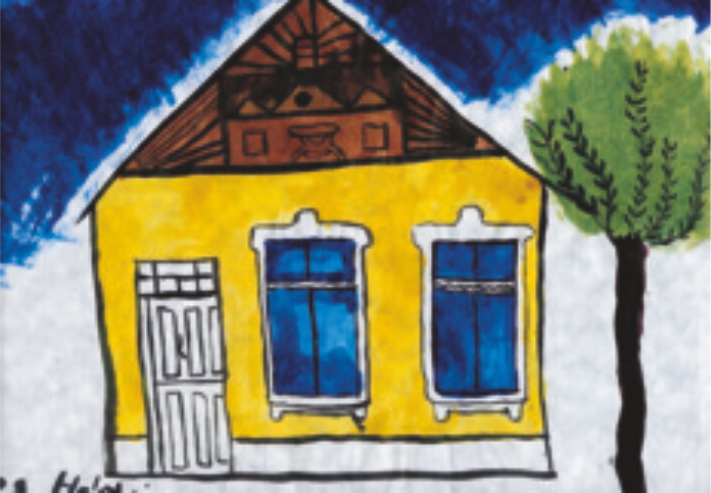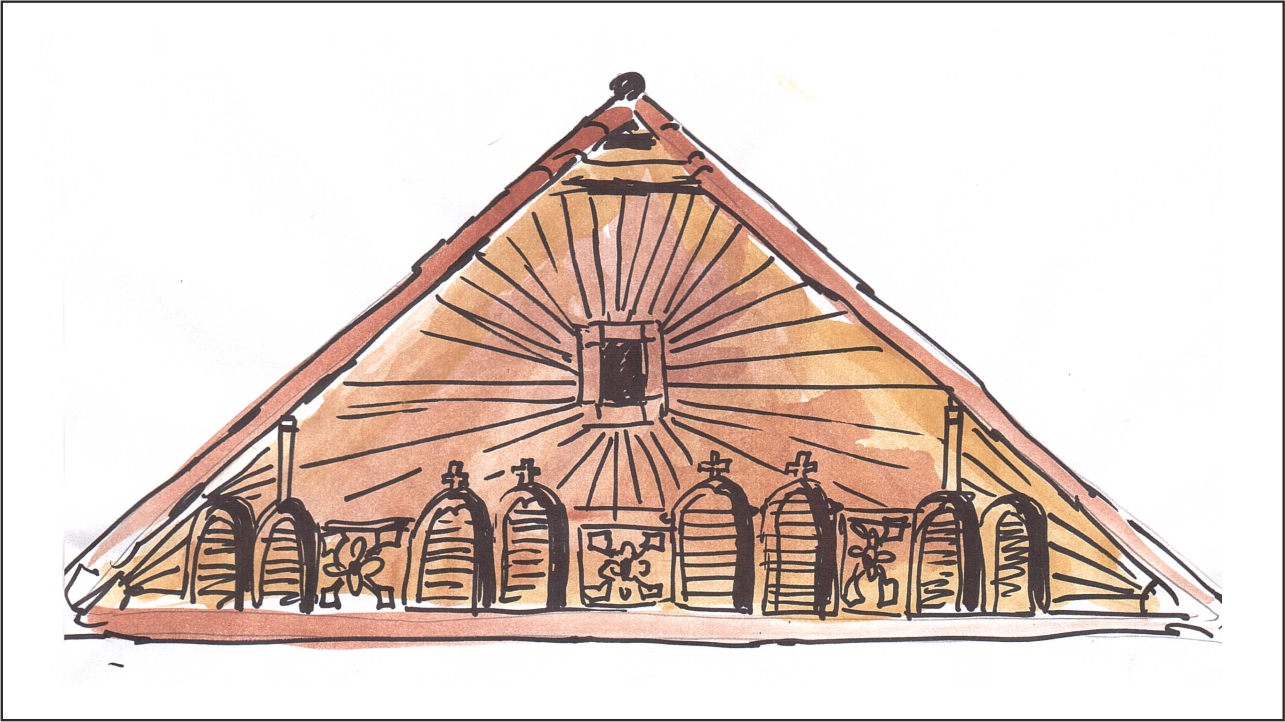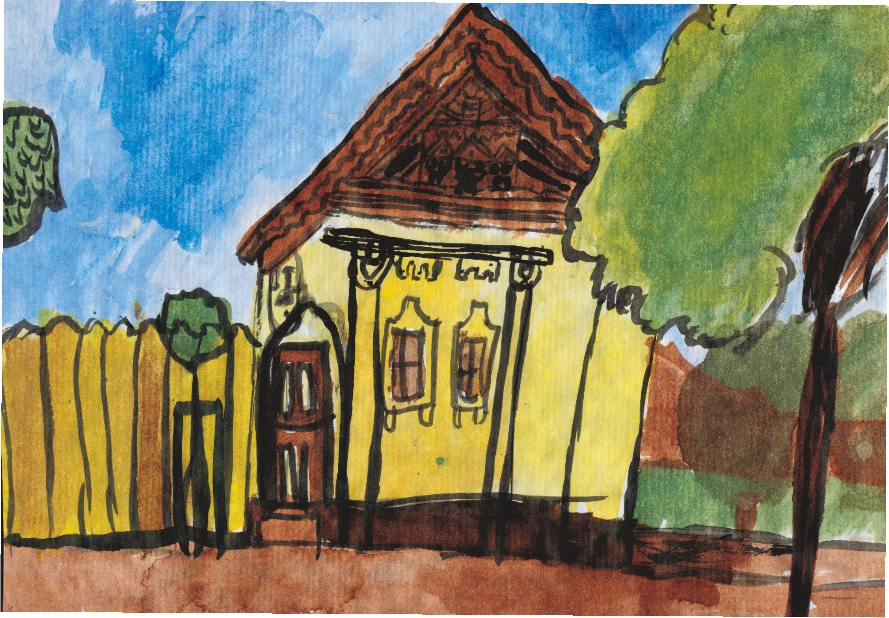
Houses with gables decorated by sunray motives are typical in the architecture of Szeged. On the gable, the eyelet hole looks like an eye (Eye of God). This architecture tradition, which also appears in the decoration of temples was spread in Szeged and its surroundings in the 18th century. According to the folk belief, this decoration helped avoiding troubles. Nowadays, just a few decorated houses remained but those are protected historic buildings and have importance in Szeged.
Did you know?

Religious background
“… it derives from the arts of temples which considered archaic Sun symbol as one of their saint symbols. The Catholic and Reformed Church symbolized the Holy Trinity with a triangle, in the middle with a bright eye which symbolizes God who sees everything and everybody.”
Sándor Bálint

What is sunray decoration on the gables?
This connected to the Baroque symbolism of Holy Trinity. It had protective roles, helped avoiding troubles. According to some assumptions, it appeared as the ancient symbol of the Sun. According to the folk belief, it protected the residents of the house from illnesses and natural disasters.
The plague epidemics was believed as the punishment of God in the 18th century so for pledge and propitiation, Holy Trinities were raised all over the country. That was the time when the triangle with God’s eye in the middle became an amulet. The name of the motive of Szeged, “Istenszöm” derives from there. It was also appeared in the frontings of temples and in the gables of altars and pulpits.
Story of their building
Houses with gables decorated with sunray motives are typical in the architecture of Szeged. On the gable, the eyelet hole looks like an eye (“istenszöm” - Eye of God in the tradition of Szeged) and from which staves take shape like sunrays.
This tradition in the architecture was spread in Szeged in the end of the 18th century after the great flood in Szeged. The coloured sunray motives differs from house to and they are important sights of Szeged. In 1883, the division of kitchens, porches and the decorations of gables and also sunray motives from the old traditions of architecture appeared in the re-building drafts, as well. Beside these, whitewashing of walls, building attic staircase, eaves and cellar and the proper sizes of rooms were also recommended.
Sándor Bálint mentioned the following settlements: farms in Szeged, Algyő, Deszk, Feketetó, Földeák, Jázova, Kistelek, Kiszombor, Kübekháza, Röszke, Sándorfalva, Száján, Szentmihálytelek, Szőreg, Tápé, Tiszasziget, Törökkanizsa, Újszentiván, Ada, Horgos, Királyhalom, Kiskundorozsma, Kiskunmajsa, Martonos, Óbecse, Szegvár, Apátfalva, Csanádpalota, Makó, Orosháza.

References:
Bálint Sándor: Napsugaras házvégek pusztulása. In: Szegedi Friss Újság, 1936. dec. 25.
Bálint Sándor: Szeged városa. Bp., 1959.
Bálint Sándor: A szögedi nemzet. In: Móra Ferenc Múzeum Évkönyve 1974/75. 2. Szeged, 1976.
Cs. Sebestyén Károly: Szegedi napsugárdíszes házvégek. In: Néprajzi Értesítő 1904.
Juhász Antal: A napsugaras oromdíszítés és megóvásának lehetőségei. In: Műemlékvédelem 1980 (XXIV. évf.) 165-171.
Osváthné Csegezi Mónika – Osváth Gábor Dániel: A régi Szeged múlékony jellegzetességei: a napsugárdíszes házoromzatok. In: Ház és Ember : A Szabadtéri Néprajzi Múzeum Évkönyve. Szentendre, no. 18. 2005. 81-166.
Vass Erika – Valkony Károly: Napsugaras házak múltja és jelene. In: Ház és Ember : A Szabadtéri Néprajzi Múzeum Évkönyve. Szentendre, no. 18. 2005. 53-80.
http://www.delmagyar.hu/szegedi_setak/napsugaras_hazak/41526/
http://www.szegedvaros.hu/ertektar/7682-szegedi-napsugaras-oromzatu-hazak.html